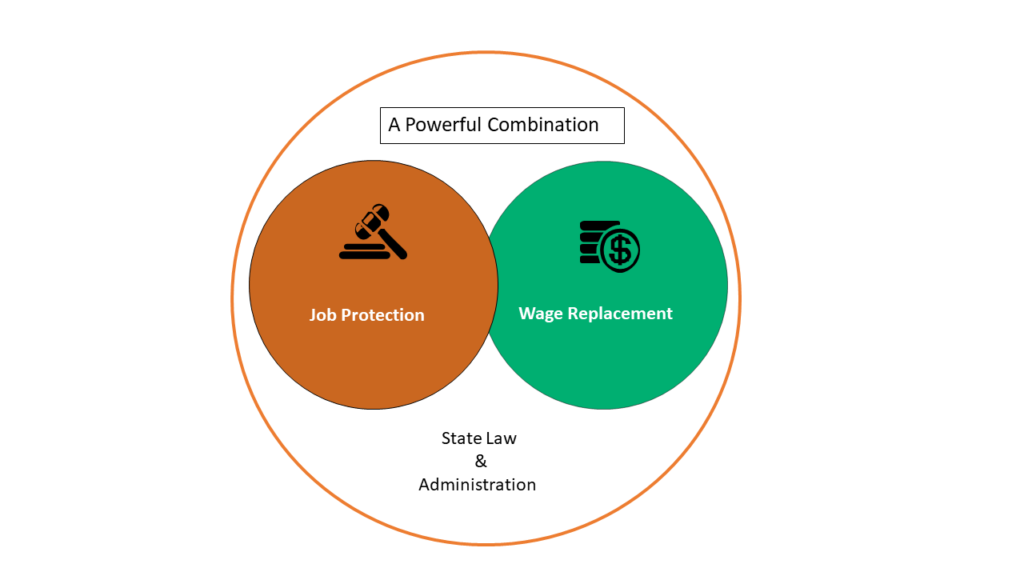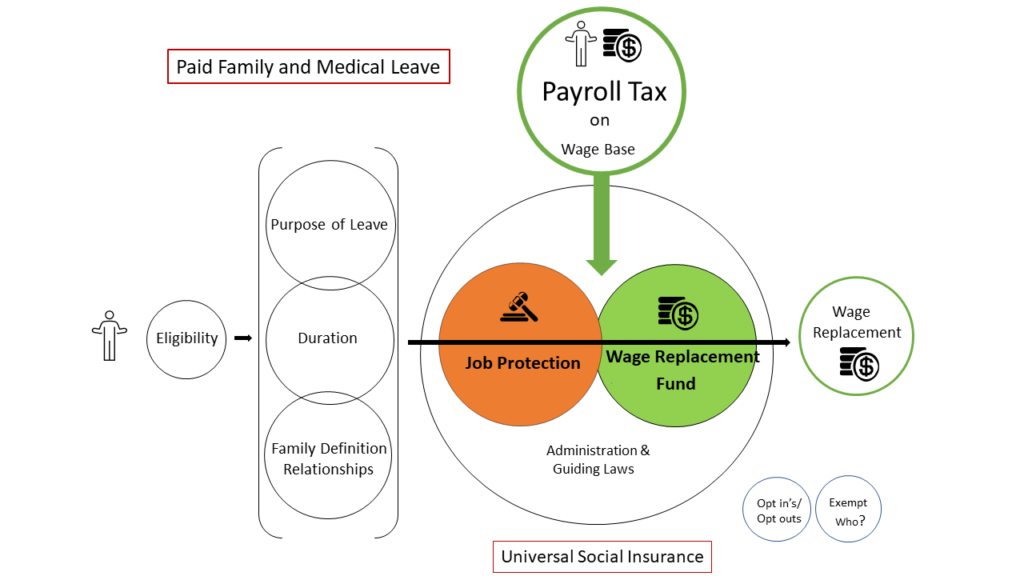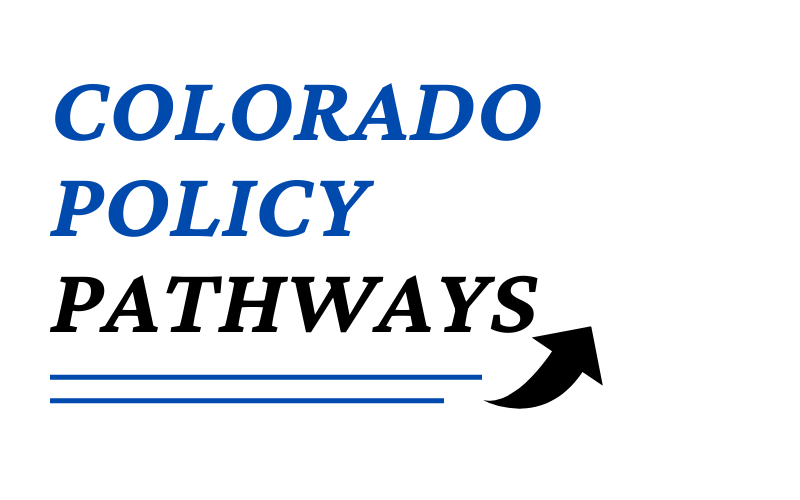Colorado voters will face a large number of big decisions on the November ballot. Every one involves layers of details that lie beneath the surface and that have far-reaching consequences.
One of the most critical of the ballot propositions is Proposition 118, the implementation of a Paid Family and Medical Leave Insurance Program administered through the Colorado Department of Labor and Employment, CDLE. This is a powerful policy. We can’t afford to get this wrong. Not now.
How did we get here?
Despite failing to gain adequate consensus in 5 of the last 7 state legislative sessions, even in years with strong progressive majorities, advocates of a state-run paid leave program have decided to bring the complex measure before voters.
To be fully informed will be a challenge. Yet it is critically important because, beyond its promise to deliver a popular employee benefit, its numerous impacts have raised growing concern. Costs and risks to workers, job opportunities, businesses, and the economy – particularly now – have limited its broader support.
Costs and their implications will emerge over time. As they do, we will have no recourse other than to address the harms and inequities by adding more rules and complexity, because the policy is essentially irreversible.
Proposition 118 creates a Paid Family and Medical Leave Program administered by a new division of the Colorado Department of Labor and Employment.
The Blue Book excerpt can be viewed here.
A YES vote means that the state will create a program based on the terms of Proposition 118.
A NO vote means that the state will not create a program based on the terms of Proposition 118.
Not all Paid Family Leave measures are alike. In the US, the first model of the family leave component of PFML was implemented by California in 2004.
Proposition 118 is a new bundled policy model that would launch as a much different program.
Proposition 118 proposes a program that would be among the first in the country to include a full range of features and benefits at levels this high. It has emerged as advocates among the various states have continued to alter the design and terms of these policies to address disappointing outcomes. They believe that this will deliver an optimal benefits package for labor.
Putting these programs into practice is where the rubber hits the road. We are still learning about how various modifications change outcomes for the better or for the worse. It seems unlikely that in such an enormous web of interactions and rapid change that impacts and outcomes will ever be predictable. But one thing we do know – a big policy will have big impacts.

While a few other states have passed measures similar to Prop 118, those programs are not yet fully operational.1 This makes it extremely hard for us to determine the costs and risks of a program on this scale.
It matters because the policy covers nearly all Colorado workers and ultimately drops risks squarely on their wages.
Key provisions: what is it, and what does it do?
Proposition 118 creates a state-run paid family and medical leave program based on a Universal Social Insurance model. It establishes a fund in the Colorado State Treasury and creates a new division of the Colorado Department of Labor to administer and adjudicate the program.
The law would provide eligible employees a partial wage replacement benefit for up to 12 weeks (16 weeks for pregnancy and childbirth complications) beginning January 1, 2024.
Proponents claim this will meet the needs of working caregivers and advance equity.
Opponents question the predictability of the program’s use and the far-reaching costs and risks to workers’ wages and job opportunities, our diverse businesses, and the economy.
Funding of the program

- The fund requires a payroll tax to be deducted from employees’ wages.
- The program’s initial premium will be .9% of employee wages to an annual cap.
- The premium may grow as the use and administration of the program grows.
- The law sets a premium rate cap at 1.2%
The payroll tax or “premium” can be split between employers and employees
- Employers are required to contribute a minimum of 50% of the total premium.
- Businesses with fewer than 10 employees are exempt from paying their 50% contribution, but must submit the 50% employee contribution.
- Employees will be subject to a maximum contribution of 50% of the total premium.
- Some employers may elect to contribute up to 100% of the premium.
Based on estimates of the taxable wage base set by Social Security for 2023, (current 2020 taxable maximum is $137,700) the maximum amount of wages the premium can be charged for the calendar year 2023 is estimated to be $153,600 per person. This would limit the maximum annual premium tax to $1,382.
Beginning in the calendar year 2025, the program director can set the premium at up to 1.2 percent of an employee’s taxable wages for an estimated maximum annual premium of $1,991.
The employer contribution for state employees will be paid through the state budget.
Participation is mandatory for most workers and businesses
- Local governments may opt-out. They are not required to participate.
- A local government employee may then opt-in and pay their 50% contribution directly to the Division.
- Self-employed workers may opt-in and are subject to a 50% contribution.
- Those that opt-in (both local government employees and self-employed) must commit to 3 years participation in the program
- Firms may opt-out with an equivalent program.
The Benefits
Proposition 118 would provide up to 12 weeks of partial wage replacement (an additional 4 weeks for mothers due to complications of pregnancy or childbirth) for the following purposes:
- to care for their own serious health condition;
- to care for a new child during the first year after the birth, adoption, or placement through foster care of that child.
- to care for a family member or a person with whom they have a special bond* has a serious health condition;
- when a family member is on active duty military service or being called to active duty military service; and
- when the individual, the individual’s family member or a person with whom they have a special bond* is a victim of domestic violence, stalking, or sexual assault.
*see “significant personal bond” in family relationships below. The definition was lifted from the initiative language, Definitions (10)(e).
The program provisions allow eligible family caregiving leaves for the following relationships:
the eligible employee’s child, parent, spouse, domestic partner, grandparent, grandchild, sibling, or “any other individual with whom the covered individual has a significant personal bond that is or is like a family relationship, regardless of biological or legal relationship.”
Other key benefit or eligibility provisions
- Leave does not have to be taken on consecutive days
- Intermittent leave can be taken in periods as short as an hour.
- Most workers are eligible for the wage benefits after earnings of $2500 in a year.
Wage replacement
- Successful claims will receive 90% of their average weekly wage for those wages up to 50% of the State’s average weekly wage as determined by the Colorado Department of Labor (CDLE).
- Remaining eligible wages will be replaced at a rate of 50% to a weekly cap of 90% of the State Average Weekly Wage.
- For leaves taken before January 1, 2025, the weekly maximum benefit is $1100.
Job Protection
- The job protection provisions cover all employees that have earned wages with an employer for 180 days.
- This eligibility is determined separately from the wage replacement benefit.
- All employers with 1 or more employees are subject to the terms of the job protection.
- What job protection does:
- Workers have a right to leave without interference, a right to reinstatement, and a right to non-discrimination and non-retaliation related to a leave of absence.
- Employers must maintain health benefits.
- Enforcement
- The division director will establish rules and a fine structure not to exceed 500.00 per violation.
- Grievances can be filed up to 2 years after an occurrence or 3 years after what is deemed a willful violation.
- An aggrieved individual may bring a civil court action under this section.
For more discussion of the pfml policy model, a diagram, and how it works, see this and this.
Time-line
- If proposition 118 passes in November, the new division will move forward to create the division and administration infrastructure and to proceed with rule-making and public outreach.
- January 1, 2023, it will begin collecting premiums from workers’ wages, one year before full-implementation.
- January 1, 2024, the division will begin accepting claims and processing benefit payments.
- January 1, 2025, the director will have the option to raise the premiums, and every year thereafter.
Considerations and concerns
Program cost and wages: The top concern is the cost of the program over time. As use rises, the payroll tax required to fund it must rise, suppressing wages and other benefits. This policy is loaded with new levels of benefits that raise the uncertainty of a program that is still in development and that lacks methods to manage the risks of overuse or excess costs.
Small employers are at considerable risk: Proposition 118 imposes heavy costs and risks on small employers who already face a proliferation of regulations and at a time when many are struggling to survive. We risk losing the job creation and interpersonal services that they contribute at all levels of our communities.
Unequal impacts: The fundamental flaw of tightly defined and over-broad solutions like that proposed by Proposition 118, is that they have unequal impacts across workers, businesses, and regions. Too often these laws become complex, unwieldy, and incoherent as they layer on top of each other.
We risk interrupting progress toward more balanced solutions: Better solutions would leave us more agile to address new challenges that are delivered at a startling pace. Throughout the US, growing concern and momentum have rapidly built efforts from both the public and the private sector that encourage changes in work norms and cultures. For example, we are slowly shifting the fundamental norm that women be the primary caregivers and towards alternatives that allow parents and all working caregivers to discover a balance that works for their unique circumstances.
Norms and culture cannot be legislated. That change must come from our daily lives.
Colorado has the capacity to seek many paths out of these vexing conflicts that would leave us agile, allowing us options to adapt – to try new solutions and discard what is not working or is no longer serving us. Proposition 118 is not the right solution.
1 The featured image is a map of states with paid family and medical leave programs. Those that are fully operational are in dark blue. States that have passed laws, but are not yet accepting claims or processing benefits are in pale blue, and Colorado, which faces a November ballot proposition is in orange.
Washington State began processing claims January 1, 2020. They were the first to implement the entire policy bundle at one time. The high levels of claims they received in the first three weeks far surpassed what they had estimated. The Division Commissioner explained that due to the lack of reliable data, their estimates were essentially a guess. This is what Colorado would face if Proposition 118 is passed. Estimating the use of the program with such a unique blend of terms and on this scale is likely to be with low levels of confidence.


 Are Colorado Workers Ready to Commit to a Paid Leave Tax?
Are Colorado Workers Ready to Commit to a Paid Leave Tax?